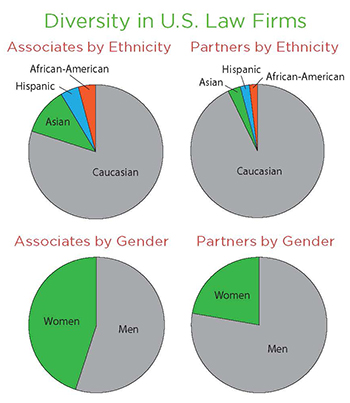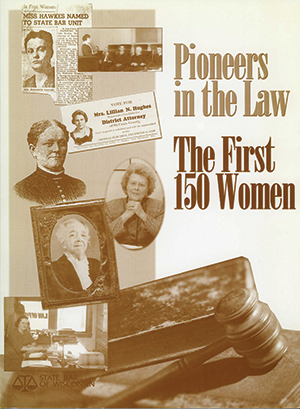Quotable
“In Wisconsin, we have had vastly disproportionate incarceration of African-Americans for decades.”

– Marquette University Law Professor Michael O’Hear, at the State Bar of Wisconsin’s Symposium on Disparate Incarceration last month. Numerous stakeholders in the criminal justice system attended the event, spearheaded by State Bar President Fran Deisinger.
The group, including judges, prosecutors, defense attorneys, and law professors, discussed how the State Bar could play a role in helping to address mass and disparate incarceration in Wisconsin.
Panelists, including O’Hear, provided a backdrop for discussion. O’Hear has focused his research on sentencing and recently wrote a book on sentencing and mass incarceration in Wisconsin.
At the symposium, he noted that Wisconsin’s imprisonment rate is twice that of Minnesota, yet crime rates for the two states are almost exactly the same, and have been for some time.
O’Hear also noted that while Wisconsin has an African-American population of around 6 or 7 percent, mostly in Milwaukee, about 40 percent of the state’s prison population is African-American.
Tech Tip
Convert PDFs to Microsoft Word, and Vice Versa

Did you know that you can open and convert a PDF file to Microsoft Word 2013 or later? If someone sends you a PDF (unsecured), you can open it up in Word for editing purposes.
Just right click on the PDF and choose “open with” MS Word. You can then edit the document in Word and save it as a PDF.
For earlier Word versions, you needed a third-party tool to make these conversions.
By the Numbers
1.8%

The percentage of African-American partners at major U.S. law firms, according to a recent report from the National Association for Law Placement (NALP).
NALP’s “2016 Report on Diversity in U.S. Law Firms” indicates that 4.1 percent of associates are African-American. While some percentages ticked up slightly in the last seven years, NALP Executive Director James Leipold said “the incredibly slow pace of change continues to be discouraging.”
Other findings from the diversity report include:
- 45 percent of law firm associates are women (45.6 percent in 2009); 22 percent of partners are women (19 percent in 2009).
- 4.4 percent of law firm associates are Hispanic (3.9 percent in 2009); 2.3 percent of partners are Hispanic (1.65 percent in 2009).
- 11.25 percent of law firm associates are Asian (9.3 percent in 2009); 3.1 percent of partners are Asian (2.2 percent in 2009).
“Minority women and Black/African-American men and women continue to be the least well represented in law firms,” Leipold said. “And, while the relatively high levels of diversity among the summer associate classes is always encouraging, the fact that representation falls off so dramatically for associates, and then again for partners, underscores that retention and promotion remain the primary challenges that law firms face with respect to diversity.”
From the Archives
Celebrating Women Pioneers in the Law

March is Women’s History Month. Interested in reading about the first 150 women to practice law in Wisconsin? In 1998, the State Bar of Wisconsin published Pioneers in the Law: the First 150 Women.
The publication showcases biographies culled from multiple sources, including state and local historical societies, law school alumni records, and newspapers, spanning the 60-year period from 1879 to 1943. Today, there are 8,651 women members of the State Bar of Wisconsin, or 35 percent of the membership.
Available at wisbar.org/150women
Good Ideas
Slow-motion Replay, Justice Subverted?

A study published last year in the Proceedings of the National Academy of Sciences (PNAS) tested the potential impact of allowing juries to see slow-motion replays of alleged criminal acts caught on video when intent is an element of the crime.
Test subjects saw events in regular time or slow motion and were asked “to indicate how much time they felt the actor had to execute his actions and whether
(or to what degree) they thought the action was intentional.”
In “Slow Motion Increases Perceived Intent,” the authors concluded: “We demonstrate that slow motion replay can systematically increase judgments of intent because it gives viewers the false impression that the actor had more time to premeditate before acting,” the authors note.
“In legal proceedings, these judgments of intent can mean the difference between life and death. Thus, any benefits of video replay should be weighed against its potentially biasing effects.”
On the Radar
Top Law Novels of the Last Decade

Spring break is on the horizon. If you are fortunate enough to take a vacation, consider some reading options from the ABA Journal, which recently published a list of “Top 10 Law Novels in the Last 10 Years.”
- Defending Jacob, by William Landay
- Compulsion, by Meyer Levin
- The Theodore Boone series, by John Grisham
- An Innocent Client, by Scott Pratt
- Sycamore Row, by John Grisham
- Bring Up the Bodies, by Hilary Mantel
- The Children Act, by Ian McEwan
- She-Hulk: Law and Disorder, by Charles Soule (author), Javier Pulido and Ron Wimberly (illustrators)
- Personal Injuries, by Scott Turow
- The Lincoln Lawyer, by Michael Connelly
What isn’t on this list? Post a comment below or email your recommendations for law-related books published in the last 10 years to wislawmag@wisbar.org.
